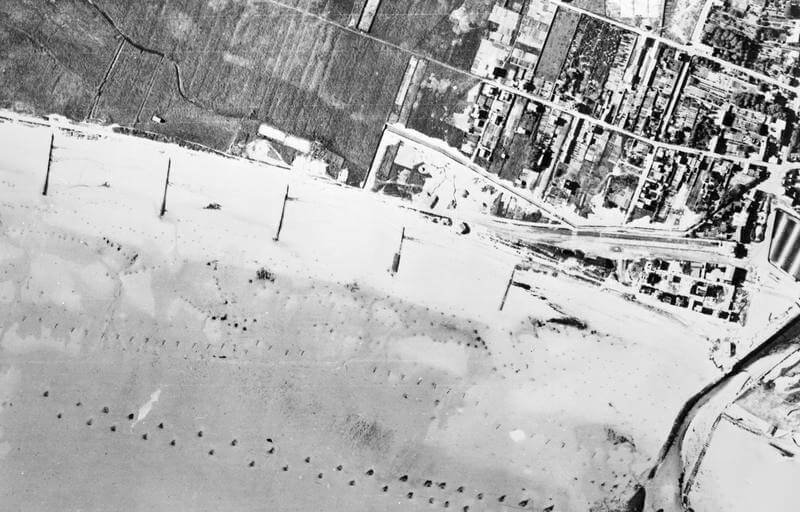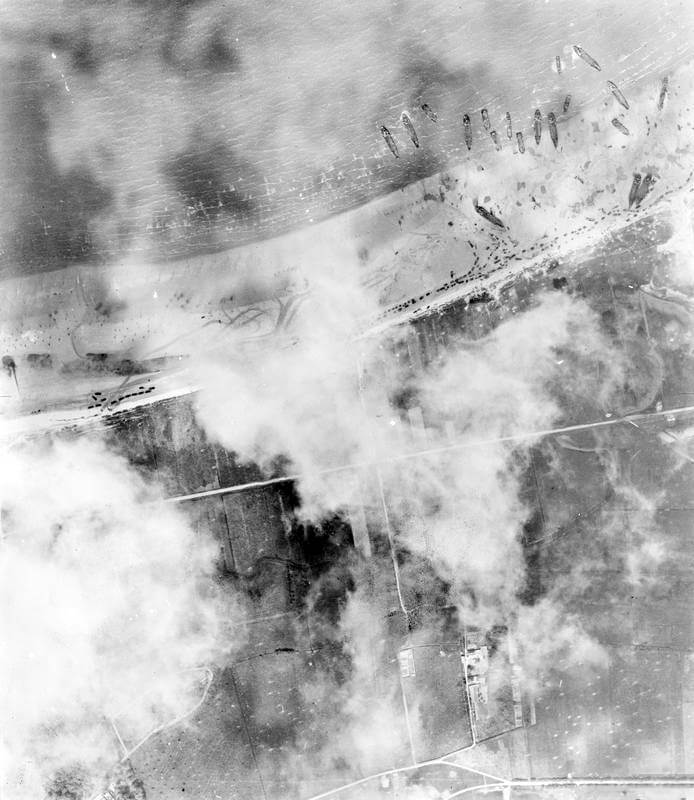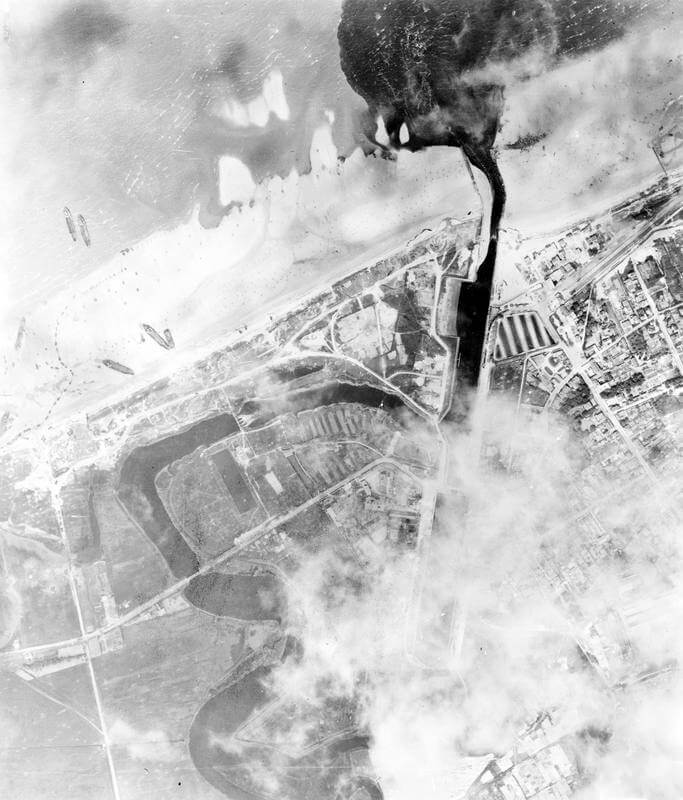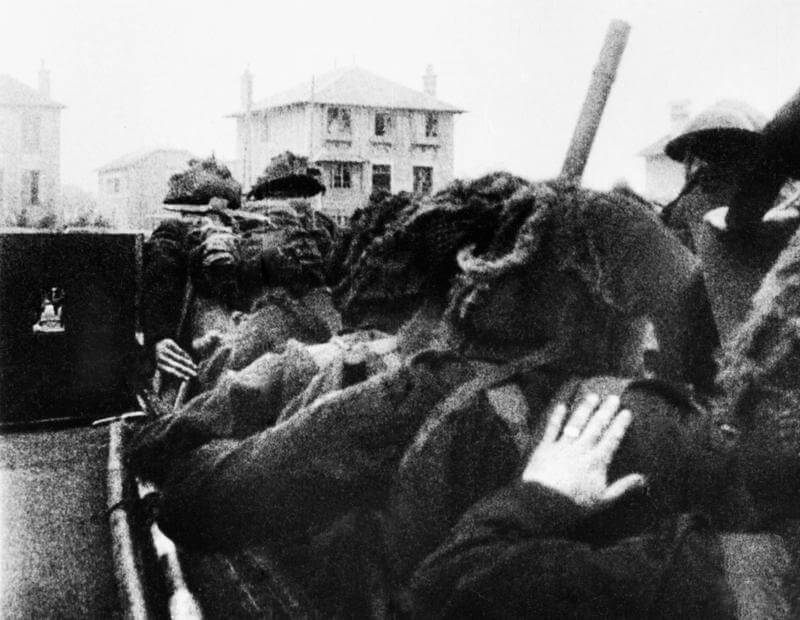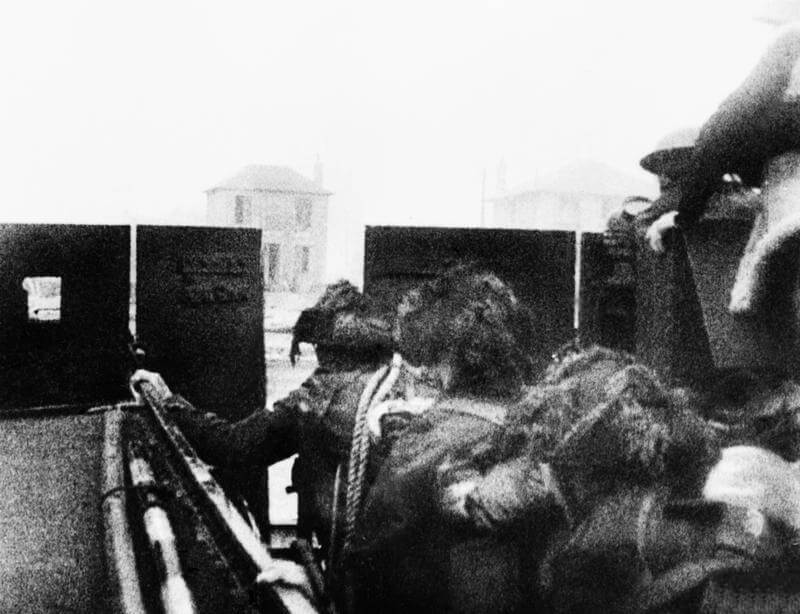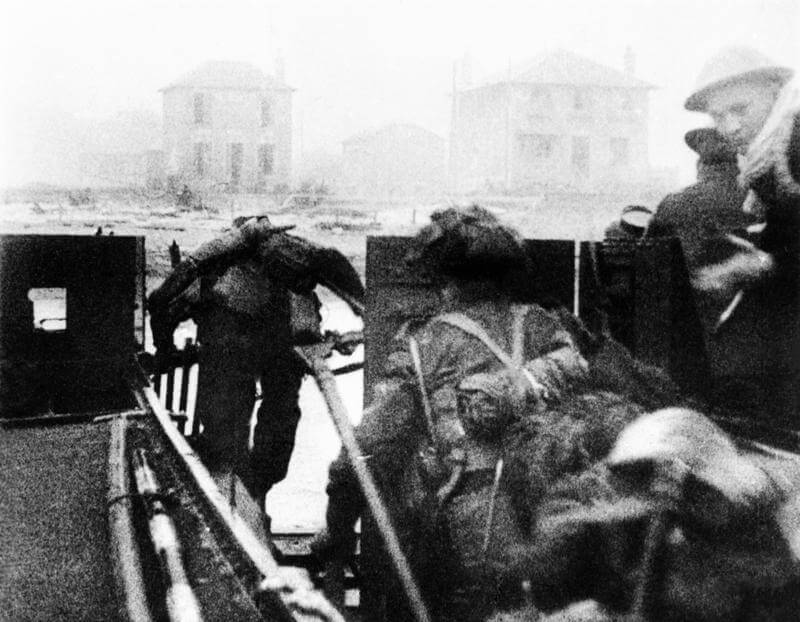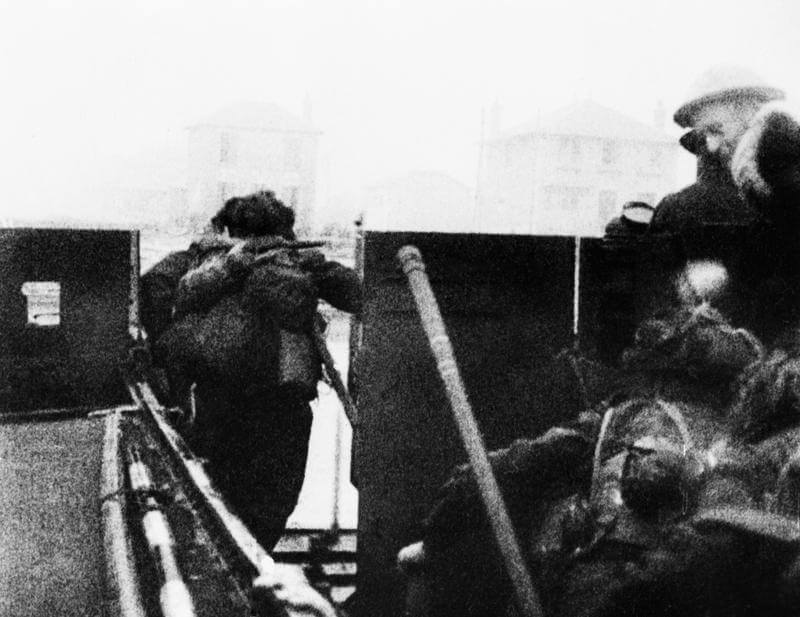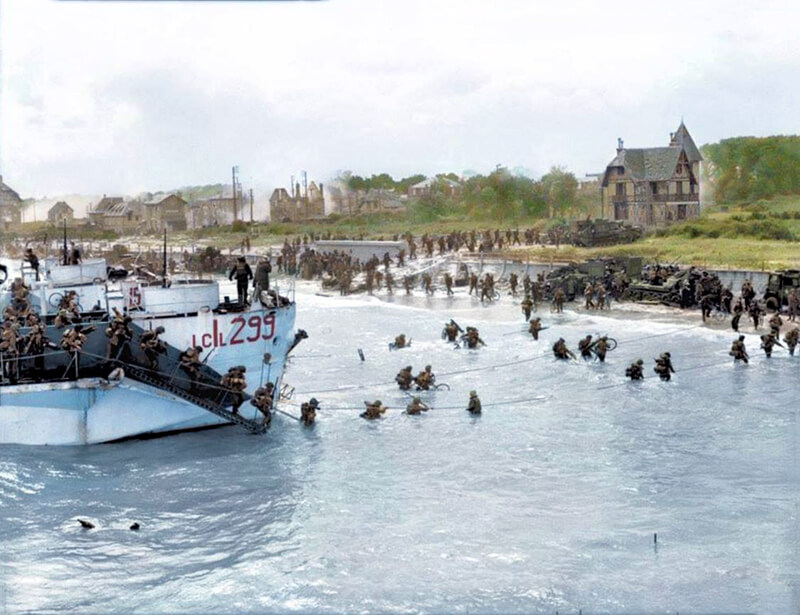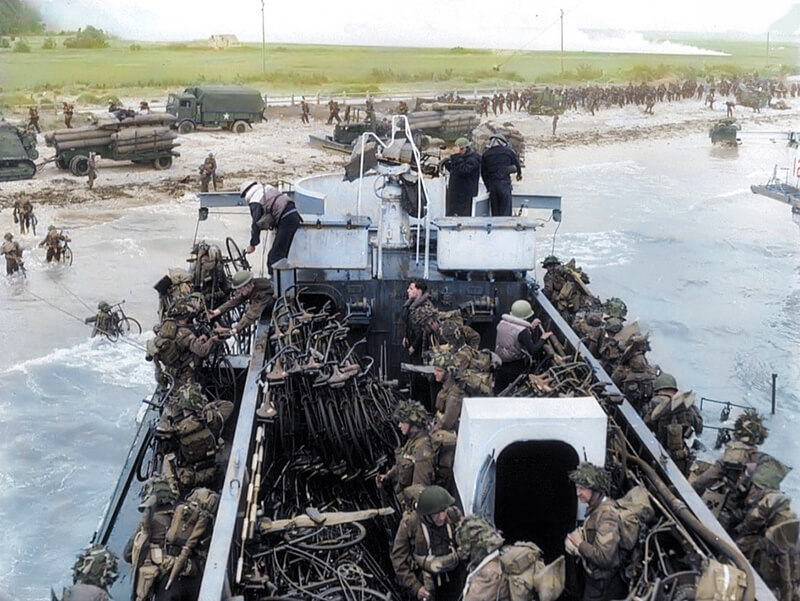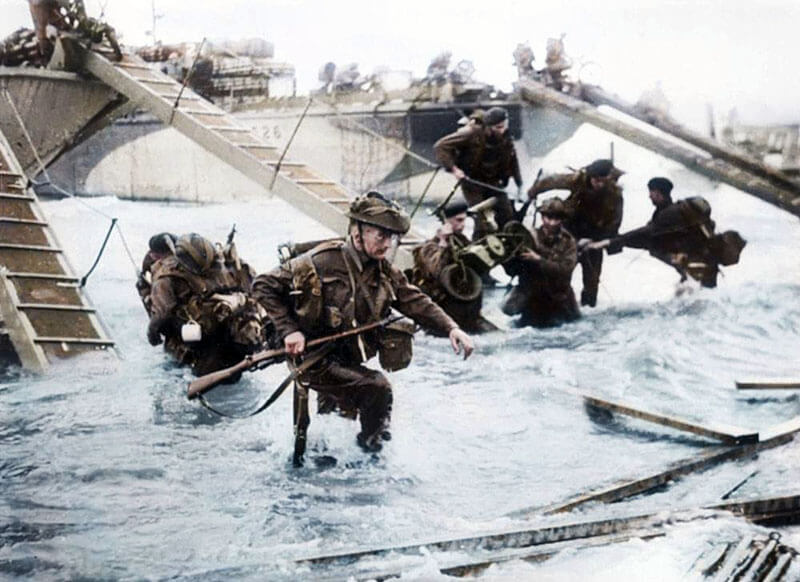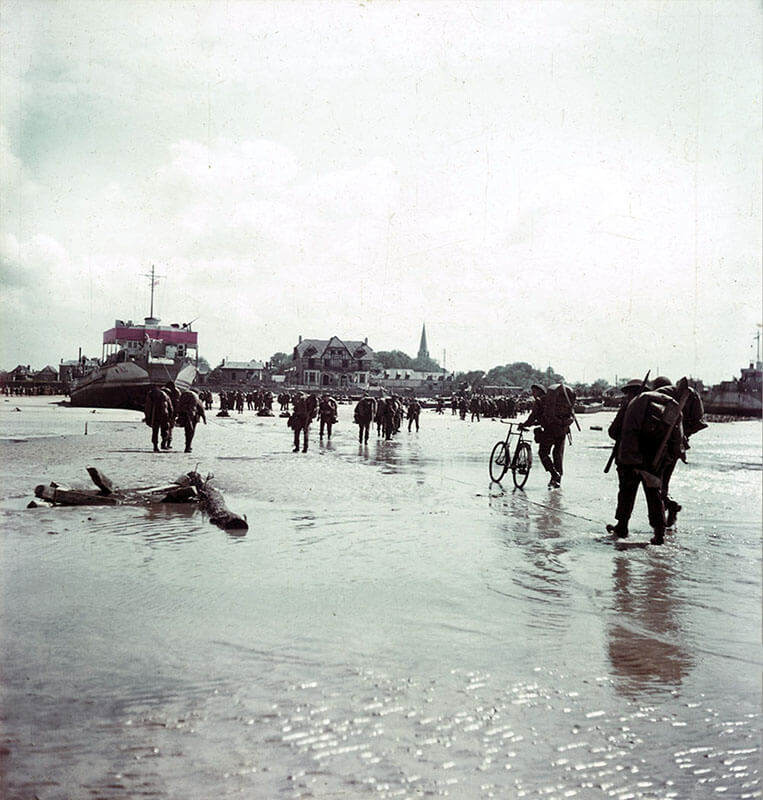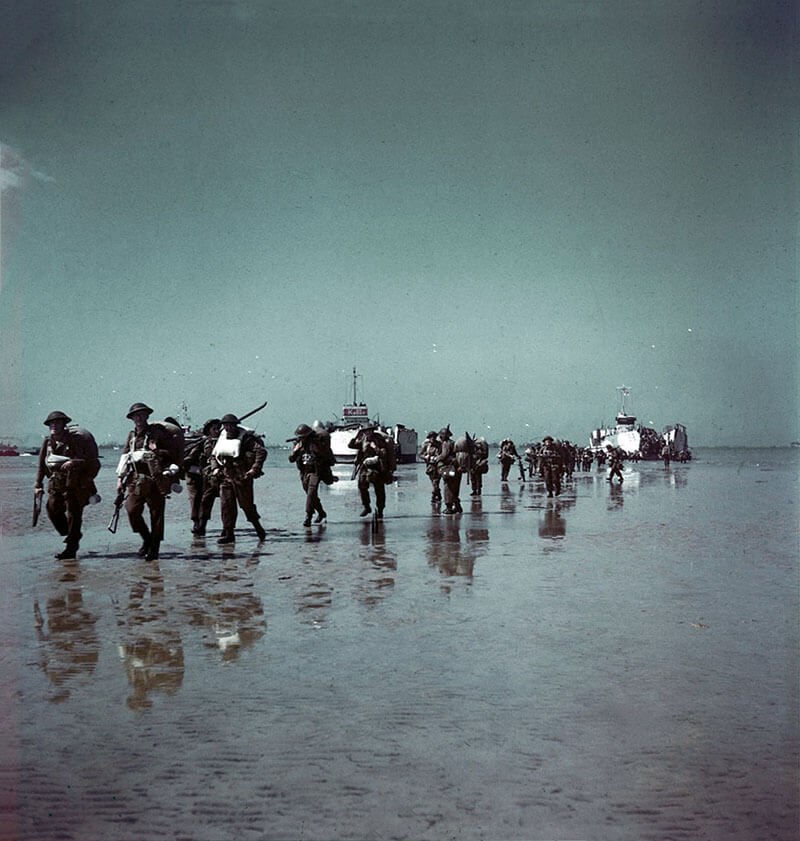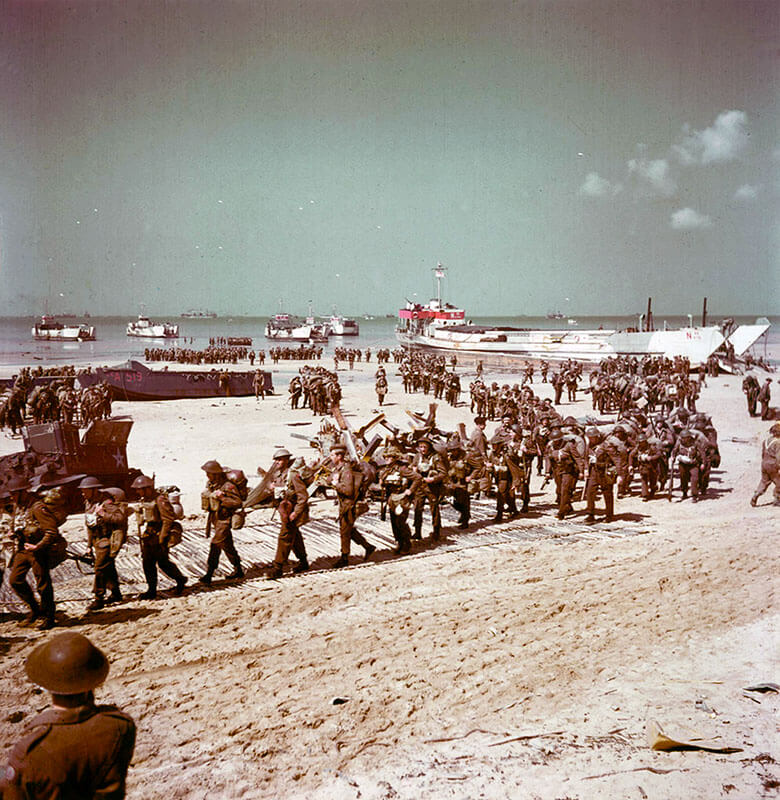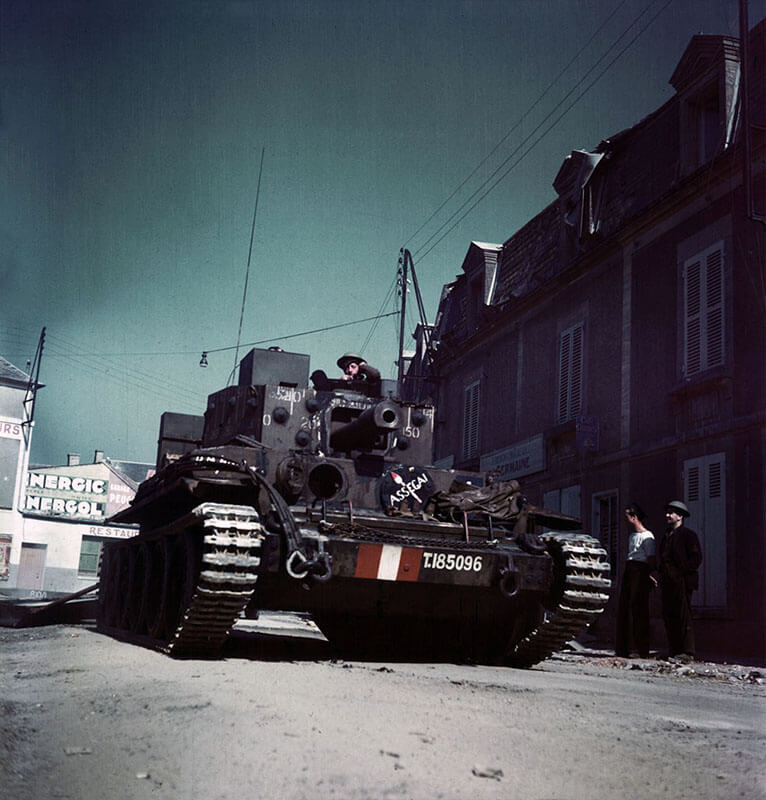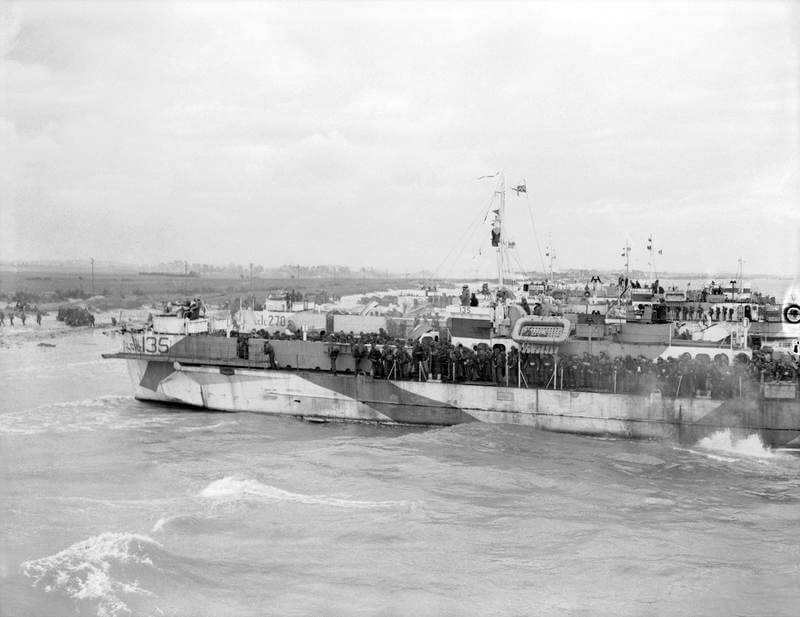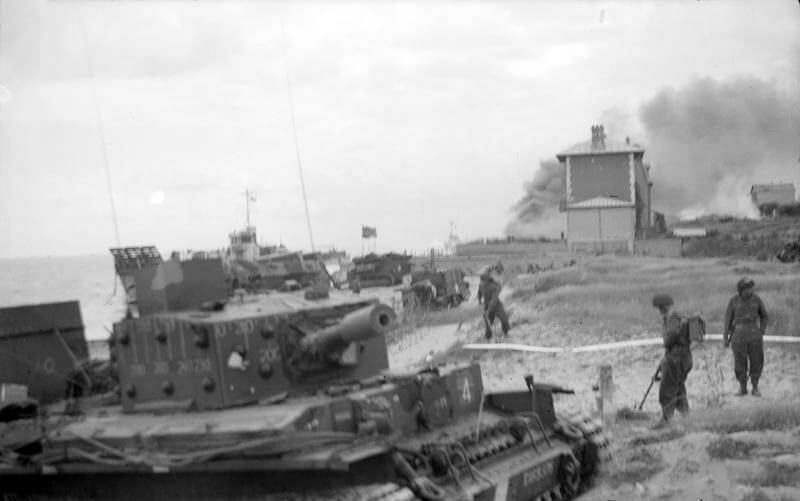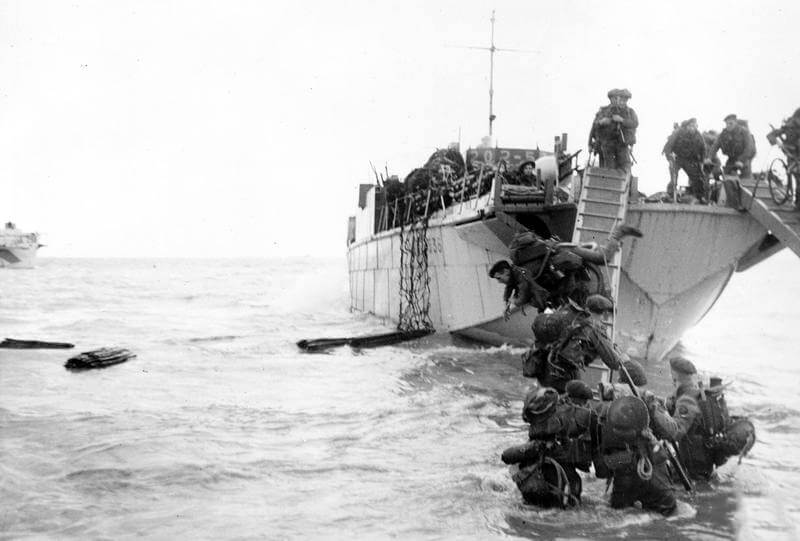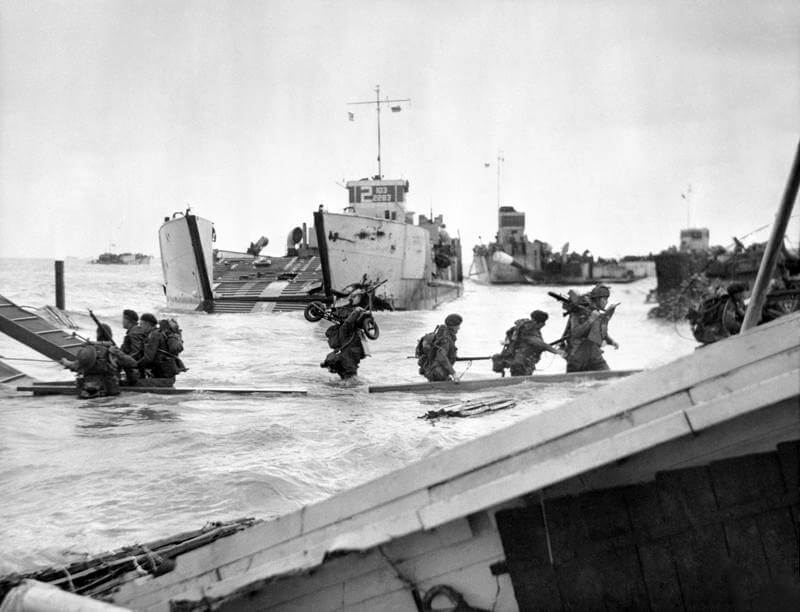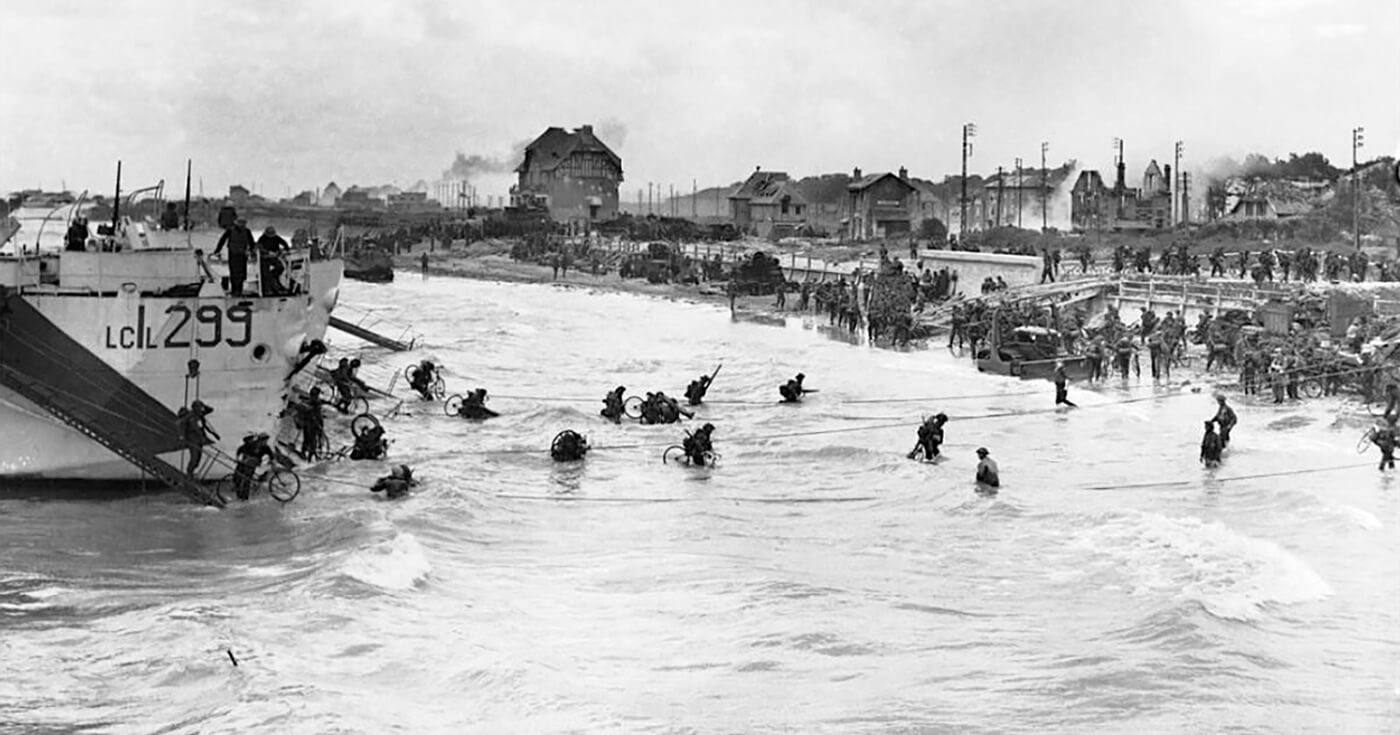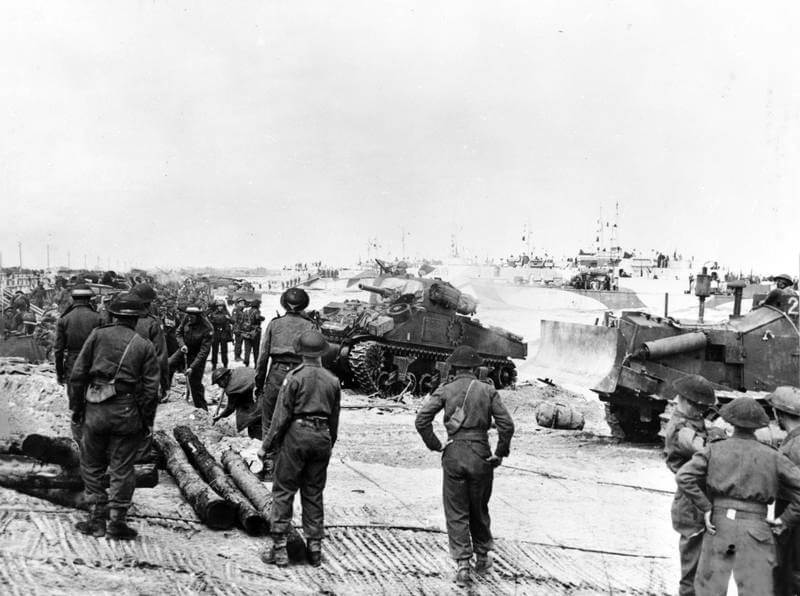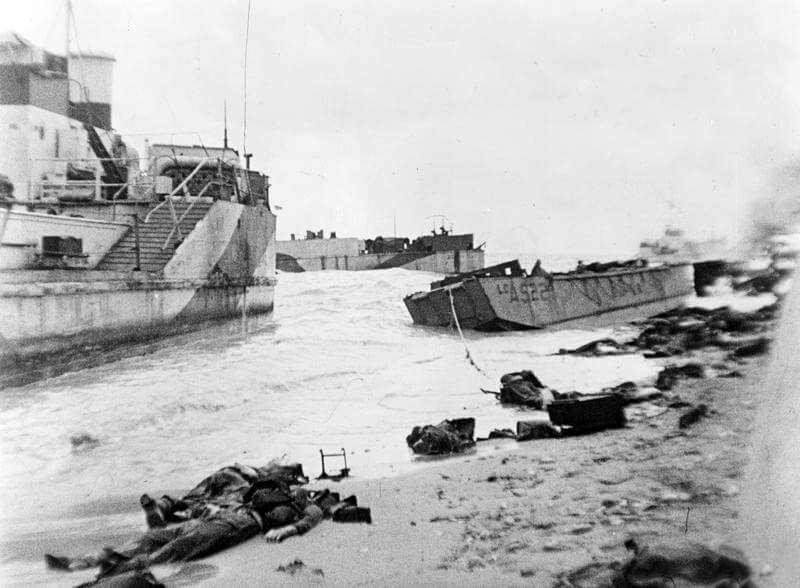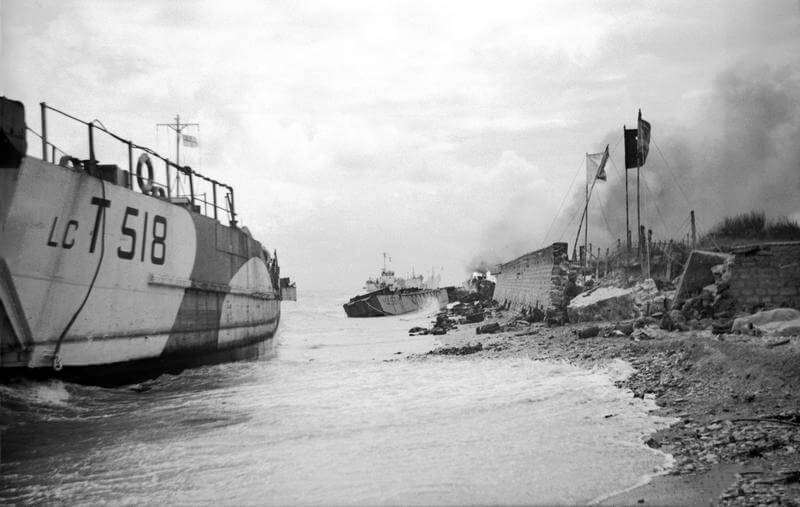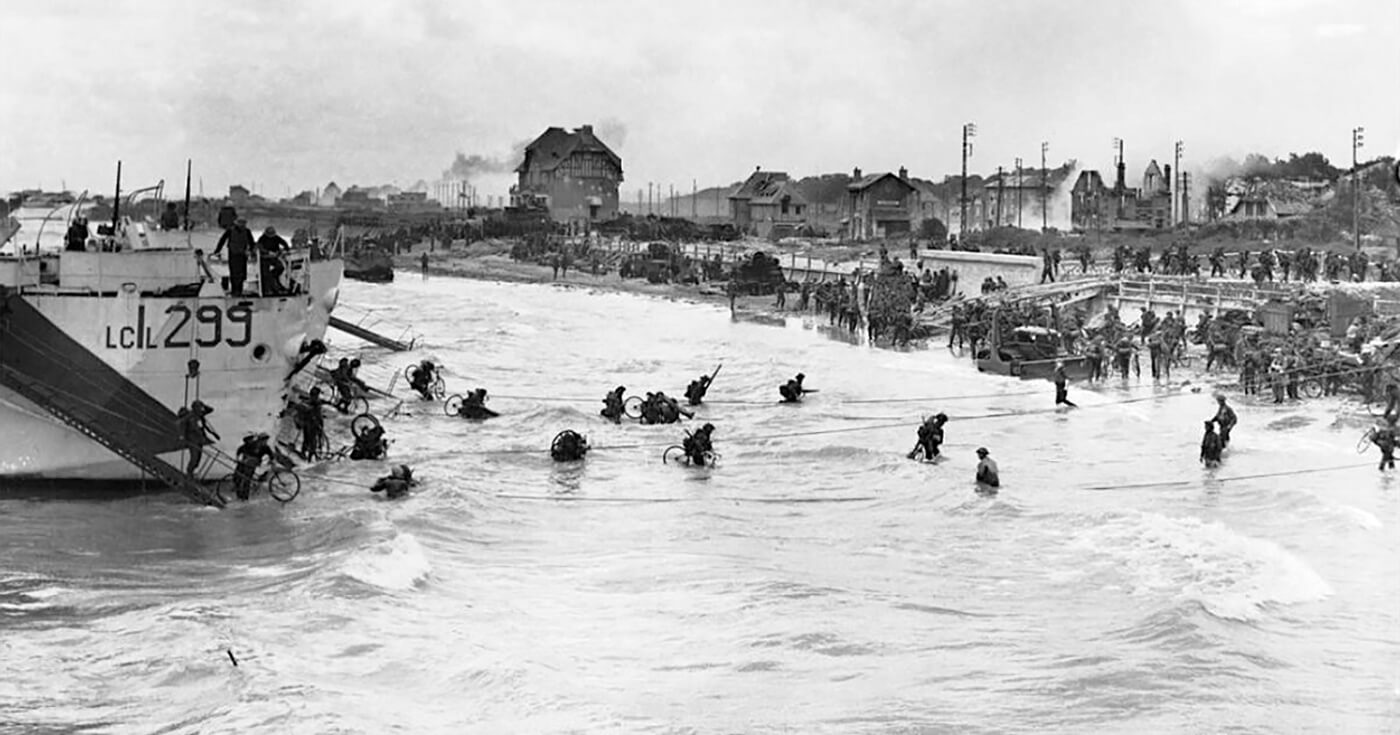| Page Created |
| November 14th, 2023 |
| Last Updated |
| June 29th, 2024 |
| Canada |
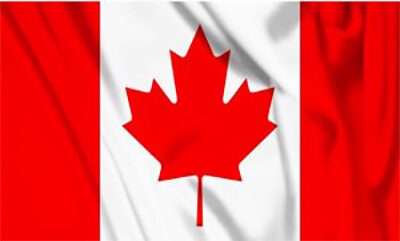 |
| Included Operations |
| – |
| Operational Areas |
| Special Air Service 6th Airborne Division Band Beach Sword Beach Gold Beach Juno Beach Omaha Beach Utah Beach 82nd Airborne Division 101st Airborne Division |
| Operations within Operation Overlord |
| Operation Gambit Operation Neptune Operation Perch Operation Epsom Operation Charnwood Operation Atlantic Operation Goodwood Operation Bluecoat Operation Totalize |
| June 6th, 1944 |
| Juno Beach |
| Objectives |
- Establish a beachhead between the villages of Graye-sur-Mer and St-Aubin-sur-Mer
- Reach the Caen-Bayeux road, capture the Carpiquet airfield west of Caen
- Link up with the British forces coming from Gold and Sword
| Operational Area |
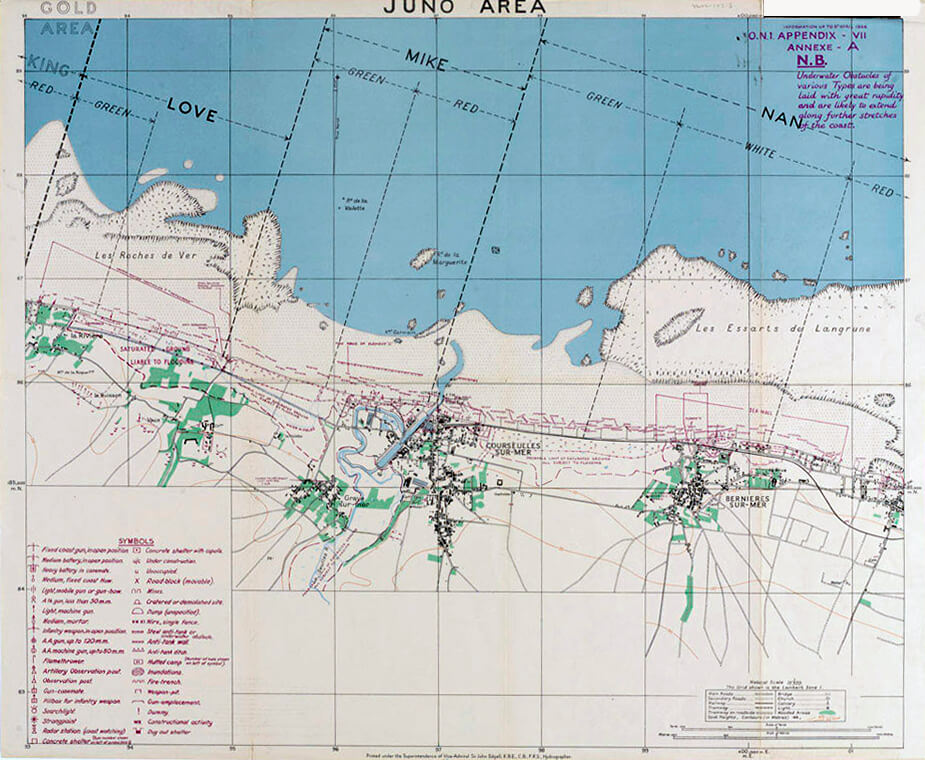
Area between the villages of Graye-sur-Mer and St-Aubin-sur-Mer, Normandy, France
| Unit Force |
| 3rd Infantry Division |
- 7th Canadian Infantry Brigade
- The Royal Winnipeg Rifles
- The Regina Rifles Regiment
- 1st Battalion, Canadian Scottish Regiment
- 8th Canadian Infantry Brigade
- The Queen’s Own Rifles of Canada
- Régiment de la Chaudière
- The North Shore (New Brunswick) Regiment
- 9th Canadian Infantry Brigade
- The Highland Light Infantry of Canada
- The Stormont, Dundas & Glengarry Highlanders
- The North Nova Scotia Highlanders
| Divisional Troops |
- Headquarters
- 50th Divisional Signals
- The Cameron Highlanders of Ottawa (Machine Gun)
- Royal Canadian Artillery
- 12th Field Regiment (Self-Propelled), Royal Canadian Artillery
- 14th Battery
- 16th Battery
- 43rd Battery
- 13th Field Regiment (Self-Propelled), Royal Canadian Artillery
- 22nd Battery
- 44th Battery
- 78th Battery
- 14th Field Regiment (Self-Propelled), Royal Canadian Artillery
- 34th Battery
- 66th Battery
- 81st Battery
- 4th Light Anti-Aircraft Regiment
- 32nd Battery
- 12th Field Regiment (Self-Propelled), Royal Canadian Artillery
- Royal Canadian Engineers
- 6th Canadian Field Company, Royal Canadian Engineers
- 16th Canadian Field Company, Royal Canadian Engineers
- 18th Canadian Field Company, Royal Canadian Engineers
- Royal Canadian Medical Corps
- 14th Field Ambulance, Royal Canadian Medical Corps
- 22nd Field Ambulance, Royal Canadian Medical Corps
- 23rd Field Ambulance, Royal Canadian Medical Corps
| Attached Units Assault Phase Command |
- 2nd Canadian Armoured Brigade
- 6th Canadian Armoured Regiment (1st Hussars)
- 10th Canadian Armoured Regiment (The Fort Garry Horse)
- 27th Canadian Armoured Regiment (The Sherbrooke Fusiliers Regiment)
- 2nd Royal Marine Armoured Support Regiment
- Royal Armoured Corps
- The Inns Court Regiment
- C Squadron
- The Inns Court Regiment
- 4th Special Service Brigade
- No. 48 (Royal Marine) Commando
- No. 30 (Commando) Assault Unit
- Royal Canadian Artillery
- 19th Field Regiment (Self-Propelled)
- 55th Battery
- 63rd Battery
- 99th Battery
- 19th Field Regiment (Self-Propelled)
- Royal Artillery
- 62nd Anti-Tank Regiment
- Headquarters
- 245th Battery
- 248th Battery
- 80th Anti-Aircraft Brigade
- Headquarters
- 114th Light Anti-Aircraft Regiment
- Headquarters
- 372nd Battery
- 375th Battery
- 93rd Light Anti-Aircraft Regiment
- 321st Battery (Attached 114th Light Anti-Aircraft Regiment)
- 73rd Light Anti-Aircraft Regiment
- 218th Battery
- 220th Battery
- 474th Searchlight Battery
- 2 Troops
- No. 155 Anti-Aircraft Operations Room
- No. 160 Anti-Aircraft Operations Room
- No. 652 Air Observation Post Squadron (Ground Staff Only)
- 62nd Anti-Tank Regiment
- Royal Canadian Engineers
- 5th Field Company, Royal Canadian Engineers
- Royal Engineers
- 26th Assault Squadrons, Royal Engineers
- 80th Assault Squadrons, Royal Engineers
- 262nd Field Company, Royal Engineers
- Headquarters
- 3rd Battery
- 4th Battery
| Attached Support Units Assault Phase Command |
- 102nd Beach Sub-Area Headquarters and Signal Section
- 7th Beach Group
- 8th Beach Group
- Royal Engineers
- 7th General Headquarters Troops Engineers
- Headquarters
- 72nd Field Company, Royal Engineers
- 85th Field Company, Royal Engineers
- 184th Field Company, Royal Engineers
- 240th Field Company, Royal Engineers
- 19th Store Section
- 20th Store Section
- 59th Mechanical Equipment Section
- 11th Port Operating Group
- 1034th Port Operating Company
- 966th Inland Water Transport Operating Company
- 7th General Headquarters Troops Engineers
- Infantry
- 8th Battalion, The King’s Regiment (Liverpool)
- 5th Battalion, The Royal Berkshire Regiment (Princess Charlotte of Wales’s)
- Royal Army Service Corps
- 30th Transport Column
- Headquarters
- 199th General Transport Company
- 282nd General Transport Company
- 139th Detail Issue Depot
- 140th Detail Issue Depot
- 240th Petrol Depot
- 242nd Petrol Depot
- 30th Transport Column
- Royal Army Medical Corps
- 32nd Casualty Clearing Station
- 1st Field Dressing Station
- 2nd Field Dressing Station
- 33rd Field Dressing Station
- 34th Field Dressing Station
- No. 33 Field Surgical Unit
- No. 34 Field Surgical Unit
- No. 45 Field Surgical Unit
- No. 46 Field Surgical Unit
- No. 56 Field Surgical Unit
- No. 13 Field Transfusion Unit
- No. 14 Field Transfusion Unit
- No. 36 Field Transfusion Unit
- 3rd Field Sanitary Section
- 4th Field Sanitary Section
- 21st Port Detachment
- Royal Ordnance Corps
- 15th Ordnance Beach Detachment
- 45th Ordnance Ammunition Company
- Royal Electrical and Mechanical
- 22nd Beach recovery Section
- 23rd Beach recovery Section
- Military Police Corps
- 242nd Provost Company
- 244th Provost Company
- Pioneer Corps
- 58th (Pioneer) Company
- 115th (Pioneer) Company
- 144th (Pioneer) Company
- 170th (Pioneer) Company
- 290th (Pioneer) Company
- 225th (Pioneer) Company
- 243rd (Pioneer) Company
- 293rd (Pioneer) Company
| Opposing Forces |
| Operation |
Juno is the codename for the beach assigned to the Canadian 3rd Infantry Division. Situated in the middle of the British sector, between Gold to the west and Sword to the east, this beach stretches 7 kilometres between the villages of Graye-sur-Mer and St-Aubin-sur-Mer.
The coast in this area is defended by elements of the 726. Regiment and 736. Regiment and is dotted with numerous concrete bunkers forming a thin defensive line. Along the beach, the gaps between the pillboxes are filled with rows of wooden posts, wooden or concrete tetrahedrons, and metal gates (also called Belgian gates) driven into the sand facing the sea.
Juno Beach is divided into two sectors: Mike (Green and Red) west of Courseulles and Nan (Green, White, and Red) between Courseulles and St-Aubin-sur-Mer.
According to plans, the assault will be conducted by two brigades attacking side by side, with the 7th Brigade to the west on Mike Green, Mike Red, and Nan Green, and the 8th Brigade to the east on Nan White and Nan Red.
For D-Day, the objectives of the 3rd Infantry Division are to reach the Caen-Bayeux road, capture the Carpiquet airfield west of Caen, and link up with the British forces coming from Gold and Sword.
| The Attack |
On the Canadian beaches, H-Hour is set for 10 minutes later than on the other British beaches to allow the landing ships to pass over the Bernières reefs. However, the rough sea delays the crafts by another 10 minutes, resulting in the 7th Brigade landing at 07:45 hours and the 8th Brigade at 07:55. By the time they land, the rising tide has already covered many of the beach obstacles.
In some areas, demolition teams have managed to clear lanes, but not across the entire beach. Consequently, 25% of the landing craft are destroyed by submerged obstacles. Initially, German defensive fire is light, but it becomes very heavy once the first men hit the beach, as most of the concrete works are designed to enfilade the beach rather than fire directly towards the sea.
Once they secure the beach defences, the Canadian troops begin clearing various resistance nests before pushing inland. The villages of Graye-sur-Mer, Courseulles, and Bernières are captured in the morning, but the strong point at St. Aubin resists until late afternoon.
The advance inland encounters little resistance. French civilians are hidden away in their cellars, and German forces are scarce. Understrength units and the concentration of all their men on the first line of defence leave the rear areas behind the coast completely undefended.
By the end of D-Day, the Canadians can be pleased with the success of their landing. Their troops are firmly dug in along a line running between Creully, Pierrepont, and Colomby-sur-Thaon, 8 kilometres inland. The 7th Brigade links up with the British from Gold Beach at Creully, and a Sherman troop of the 1st Hussars advances to Secqueville on RN 13 before turning back. To the east, the junction with troops coming from Sword Beach cannot be made due to a counter-attack by the 192nd Panzer Grenadier Regiment, which reaches the sea between Lion-sur-Mer and Luc-sur-Mer, but without further effect.
The Caen-Carpiquet airfield, one of the day’s objectives, will not be captured until early July.
On the Canadian beaches, 3,200 vehicles and 2,500 tons of material are landed. The Canadian casualties are 1,074 men, including 359 killed
| Multimedia |
| Photographs |
